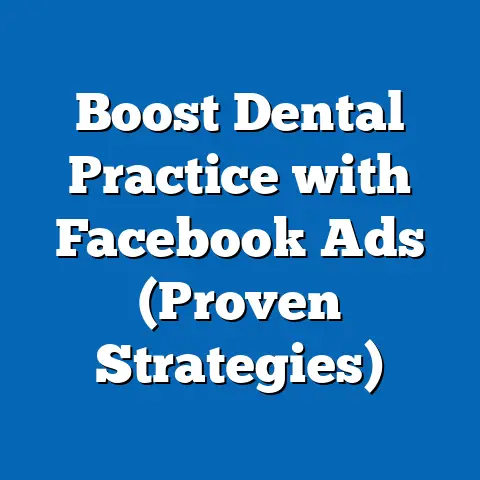Unlocking Average ROAS for Facebook Ads (Expert Insights)
Think about your favorite hobby. Maybe it’s gardening, where you meticulously plan your garden, nurture each plant, and adjust your approach based on the changing seasons. Or perhaps you’re a painter, carefully layering colors, experimenting with techniques, and constantly striving for that perfect stroke. Maybe you’re a musician, practicing scales, learning new songs, and refining your performance with each note. What do these hobbies have in common? They all require precision, patience, and a continuous drive to improve.
I’ve always found a fascinating parallel between these personal passions and the world of digital marketing, especially when it comes to Facebook ads. Just as a gardener analyzes soil conditions and adjusts watering schedules, advertisers must analyze campaign performance and adapt their strategies to unlock their true potential. And that potential is measured, in large part, by Return on Ad Spend, or ROAS.
Understanding average ROAS is like having a benchmark for your hobby. It helps you gauge your progress, identify areas for improvement, and ultimately, achieve better results. In this guide, I’ll share my expert insights on how to unlock your average ROAS for Facebook ads, turning your marketing efforts into a finely tuned, high-performing machine.
Understanding ROAS
Let’s start with the basics. ROAS, or Return on Ad Spend, is a key metric that measures the revenue generated for every dollar spent on advertising. It’s a vital indicator of your ad campaign’s profitability and effectiveness. In simple terms, it tells you how much money you’re making for every dollar you invest in your Facebook ads.
The formula for calculating ROAS is straightforward:
ROAS = (Revenue Generated from Ads / Cost of Ads) x 100
For example, if you spend $1,000 on Facebook ads and generate $5,000 in revenue, your ROAS would be:
ROAS = ($5,000 / $1,000) x 100 = 500%
This means that for every dollar you spent, you earned $5 in revenue.
Now, it’s important to distinguish between average ROAS and target ROAS. Average ROAS is the actual ROAS you’re achieving in your campaigns, while target ROAS is the ROAS you aspire to achieve. Setting a realistic target ROAS is crucial. It should be based on industry standards, your business’s historical performance, and your overall marketing goals. Aiming too high can lead to disappointment, while aiming too low might leave potential profits on the table.
Takeaway: ROAS is your North Star in Facebook advertising. Understanding it and setting realistic targets is the first step towards unlocking your campaign’s full potential.
Factors Influencing ROAS
ROAS isn’t just a number pulled out of thin air. It’s the result of a complex interplay of various factors within your Facebook advertising strategy. Understanding these factors is crucial for optimizing your campaigns and boosting your ROAS. Here are some of the most significant:
- Audience Targeting: This is arguably the most critical factor. Reaching the right audience with your ads is paramount. Are you targeting the right demographics? Are your interests and behaviors accurately defined? A well-defined audience is far more likely to convert, leading to a higher ROAS. I’ve seen campaigns with brilliant creatives fail simply because they were shown to the wrong people.
- Ad Creative Quality: Your ad creative – the visuals and the copy – needs to be compelling and engaging. High-quality images or videos, persuasive headlines, and clear calls to action are essential. Think about what resonates with your target audience and tailor your creatives accordingly. A/B testing different ad creatives is a must to identify what performs best.
- Bidding Strategies: Facebook offers various bidding strategies, such as lowest cost, cost cap, and target cost. Choosing the right strategy can significantly impact your ROAS. Experiment with different bidding strategies to see which one aligns best with your campaign goals and budget.
- Ad Placements: Where your ads appear on Facebook and Instagram matters. Different placements have different costs and conversion rates. Analyzing placement performance and optimizing accordingly can improve your ROAS. For example, I’ve noticed that mobile placements often outperform desktop placements for certain types of products.
- Landing Page Experience: Don’t underestimate the importance of your landing page. A poorly designed or irrelevant landing page can kill your conversion rates, even if your ad is perfect. Ensure your landing page is optimized for conversions, with clear messaging, a seamless user experience, and a compelling call to action.
Example: I once worked with an e-commerce client selling handmade jewelry. Initially, their ROAS was struggling. After analyzing their campaign, we realized their audience targeting was too broad, and their ad creatives were generic. We refined their audience targeting to focus on users interested in specific jewelry styles and crafts, and we created visually stunning ad creatives showcasing the craftsmanship of their products. We also optimized their landing page to provide a more personalized shopping experience. The result? Their ROAS more than tripled within a few weeks.
Expert Insight: According to a recent study by Neil Patel, businesses that personalize their ad creatives and landing pages see an average ROAS increase of 20%.
Takeaway: ROAS is a complex equation with many variables. By understanding and optimizing these factors, you can significantly improve your campaign’s performance.
Industry Benchmarks for Average ROAS
So, what’s a “good” ROAS? That’s a question I get asked all the time. The answer is, it depends. It depends on your industry, your business model, your profit margins, and your overall marketing goals. However, understanding industry benchmarks can provide a valuable frame of reference.
Here’s a general overview of typical average ROAS across various industries:
- E-commerce: A good ROAS for e-commerce businesses typically ranges from 2:1 to 4:1. This means for every dollar spent, they generate $2 to $4 in revenue. However, this can vary significantly depending on the product category and profit margins.
- Software as a Service (SaaS): SaaS companies often have higher ROAS targets, ranging from 5:1 to 10:1. This is due to the recurring revenue model and higher customer lifetime value.
- Lead Generation: ROAS for lead generation campaigns can be more difficult to measure directly, as the revenue generated from a lead might not be immediate. However, a good benchmark is to aim for a cost per lead that is significantly lower than the average customer lifetime value.
- Local Businesses: ROAS for local businesses can vary widely depending on the industry and location. However, a good starting point is to aim for a ROAS of at least 3:1.
Important Note: These are just general benchmarks. It’s crucial to research your specific industry and understand the factors that influence ROAS in your niche.
Expert Quote: “Don’t get caught up in comparing your ROAS to industry averages. Focus on improving your own performance over time,” says digital marketing expert, Rand Fishkin.
Recent Study: A recent report by HubSpot found that the average ROAS for Facebook ads across all industries is 3.07:1.
Takeaway: Industry benchmarks provide a helpful starting point, but ultimately, your goal should be to continuously improve your own ROAS and outperform your previous results.
Analyzing Campaign Performance
Now that you understand ROAS and the factors that influence it, let’s dive into how to analyze your campaign performance and determine your average ROAS. Facebook Ads Manager is your best friend here. It provides a wealth of data and insights to help you understand how your campaigns are performing.
Here are some key metrics to monitor:
- Impressions: The number of times your ad was shown.
- Reach: The number of unique people who saw your ad.
- Click-Through Rate (CTR): The percentage of people who saw your ad and clicked on it. A higher CTR indicates that your ad is resonating with your audience.
- Cost Per Click (CPC): The average cost you pay for each click on your ad.
- Conversion Rate: The percentage of people who clicked on your ad and completed a desired action, such as making a purchase or filling out a form.
- Cost Per Acquisition (CPA): The average cost you pay to acquire a customer through your ad.
Using Facebook Ads Manager:
- Navigate to Ads Manager: Log into your Facebook account and go to Ads Manager.
- Select Your Campaign: Choose the campaign you want to analyze.
- Customize Your Columns: Click on the “Columns” dropdown menu and select “Customize Columns.”
- Choose Your Metrics: Select the metrics you want to monitor, including impressions, reach, CTR, CPC, conversion rate, CPA, and ROAS.
- Analyze Your Data: Review the data and look for trends and patterns. Identify which ads, audiences, and placements are performing best.
Interpreting Your Metrics:
- Low CTR: This could indicate that your ad creative isn’t compelling enough, or your audience targeting is off.
- High CPC: This could mean that your ad is targeting a competitive audience, or your quality score is low.
- Low Conversion Rate: This could indicate that your landing page is not optimized for conversions, or your product or service isn’t appealing to your target audience.
- High CPA: This means you’re spending too much to acquire a customer. You need to optimize your campaign to lower your CPA and improve your ROAS.
Expert Advice: “Don’t just look at the overall ROAS. Analyze your campaign performance at the ad set and ad level to identify what’s working and what’s not,” says Facebook Ads expert, Amy Porterfield.
Takeaway: Analyzing your campaign performance is an ongoing process. By regularly monitoring your metrics and interpreting the data, you can identify areas for improvement and optimize your campaigns for higher ROAS.
Strategies to Improve ROAS
Now for the most important part: How do you actually improve your ROAS? Here are some expert-approved strategies that I’ve seen work wonders for my clients:
- A/B Testing: This is the cornerstone of any successful Facebook advertising strategy. Test everything – headlines, images, ad copy, call to actions, and even landing pages. A/B testing allows you to identify what resonates best with your audience and optimize your campaigns accordingly. I always recommend testing one element at a time to accurately measure its impact.
- Refine Audience Segmentation: Don’t just target broad audiences. Segment your audience based on demographics, interests, behaviors, and custom audiences. The more targeted your audience, the higher your conversion rates will be. Lookalike audiences, based on your existing customers, can be particularly effective.
- Optimize Ad Placements: Analyze your placement performance and focus on the placements that are generating the highest ROAS. You can manually select placements or let Facebook optimize them automatically. Experiment with both options to see what works best for you.
- Leverage Retargeting: Retargeting allows you to show ads to people who have previously interacted with your website or Facebook page. This is a highly effective strategy for driving conversions, as these users are already familiar with your brand and products. I’ve seen retargeting campaigns achieve ROAS that are 2x or even 3x higher than regular campaigns.
- Improve Landing Page Experience: As I mentioned earlier, a great ad can be wasted on a poor landing page. Make sure your landing page is relevant to your ad, easy to navigate, and optimized for conversions. Use clear messaging, compelling visuals, and a strong call to action.
- Use Video Ads: Video ads are incredibly engaging and can capture attention more effectively than static images. Experiment with different video formats, such as short-form videos, explainer videos, and customer testimonials.
- Personalize Your Ads: Personalization is key to capturing attention and driving conversions. Tailor your ads to specific audience segments based on their interests, behaviors, and purchase history.
- Monitor Ad Frequency: Showing your ad too many times to the same person can lead to ad fatigue and decreased performance. Monitor your ad frequency and adjust your targeting or creatives accordingly.
- Stay Up-to-Date: Facebook’s advertising platform is constantly evolving. Stay up-to-date with the latest features, best practices, and algorithm changes to stay ahead of the curve.
Real-Life Example: I worked with a clothing retailer who was struggling with their ROAS. After implementing these strategies, including A/B testing, refined audience segmentation, and retargeting, they saw a 40% increase in their ROAS within just a few months. They were able to identify their best-performing ad creatives, target their ideal customers, and optimize their landing pages for conversions.
Takeaway: Improving ROAS is an ongoing process of experimentation, analysis, and optimization. By implementing these strategies and continuously refining your approach, you can unlock your campaign’s full potential.
Conclusion
Unlocking your average ROAS for Facebook ads is a journey, not a destination. It requires a deep understanding of your target audience, a commitment to experimentation, and a willingness to adapt to the ever-changing landscape of digital marketing.
Think back to your hobby. Just like you wouldn’t expect to become a master gardener overnight, you can’t expect to achieve a high ROAS without putting in the effort. It takes time, practice, and a continuous drive to improve. But with the right strategies and a data-driven approach, you can transform your Facebook advertising into a finely tuned, high-performing machine.
So, embrace the challenge, experiment with different approaches, and never stop learning. Just like a gardener nurturing their plants, you can nurture your Facebook ad campaigns and watch your ROAS flourish.
Call to Action:
What are your biggest challenges with Facebook ads? Share your experiences in the comments below! And don’t forget to subscribe to my newsletter for more expert insights and updates on digital marketing trends. Let’s unlock your advertising potential together!






